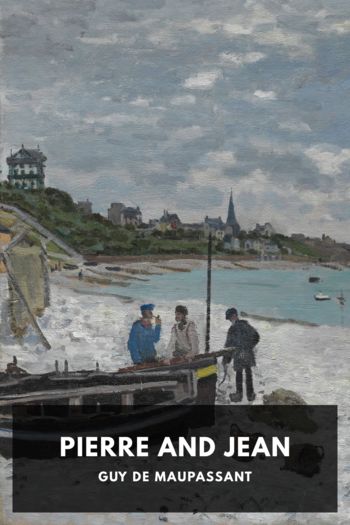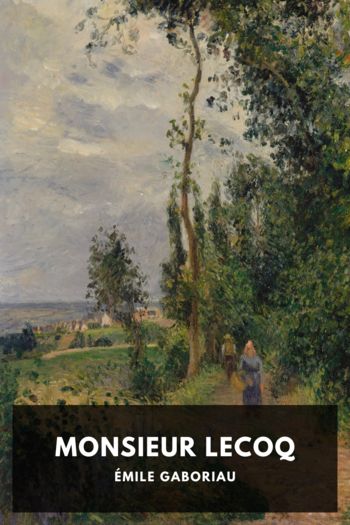Notre-Dame de Paris, Victor Hugo [i like reading TXT] 📗

- Author: Victor Hugo
Book online «Notre-Dame de Paris, Victor Hugo [i like reading TXT] 📗». Author Victor Hugo
Added to the Definitive Edition
It is by mistake that this edition was announced as augmented by many new chapters. The word should have been unpublished. In fact, if by new, newly made is to be understood, the chapters added to this edition are not new. They were written at the same time as the rest of the work; they date from the same epoch, and sprang from the same thought, they have always formed a part of the manuscript of Notre-Dame de Paris. Moreover, the author cannot comprehend how fresh developments could be added to a work of this character after its completion. This is not to be done at will. According to his idea, a romance is born in a manner that is, in some sort, necessary, with all its chapters; a drama is born with all its scenes. Think not that there is anything arbitrary in the numbers of parts of which that whole, that mysterious microcosm which you call a drama or a romance, is composed. Grafting and soldering take badly on works of this nature, which should gush forth in a single stream and so remain. The thing once done, do not change your mind, do not touch it up. The book once published, the sex of the work, whether virile or not, has been recognized and proclaimed; when the child has once uttered his first cry he is born, there he is, he is made so, neither father nor mother can do anything, he belongs to the air and to the sun, let him live or die, such as he is. Has your book been a failure? So much the worse. Add no chapters to an unsuccessful book. Is it incomplete? You should have completed it when you conceived it. Is your tree crooked? You cannot straighten it up. Is your romance consumptive? Is your romance not capable of living? You cannot supply it with the breath which it lacks. Has your drama been born lame? Take my advice, and do not provide it with a wooden leg.
Hence the author attaches particular importance to the public knowing for a certainty that the chapters here added have not been made expressly for this reprint. They were not published in the preceding editions of the book for a very simple reason. At the time when Notre-Dame de Paris was printed the first time, the manuscript of these three chapters had been mislaid. It was necessary to rewrite them or to dispense with them. The author considered that the only two of these chapters which were in the least important, owing to their extent, were chapters on art and history which in no way interfered with the groundwork of the drama and the romance, that the public would not notice their loss, and that he, the author, would alone be in possession of the secret. He decided to omit them, and then, if the whole truth must be confessed, his indolence shrunk from the task of rewriting the three lost chapters. He would have found it a shorter matter to make a new romance.
Now the chapters have been found, and he avails himself of the first opportunity to restore them to their place.
This now, is his entire work, such as he dreamed it, such as he made it, good or bad, durable or fragile, but such as he wishes it.
These recovered chapters will possess no doubt, but little value in the eyes of persons, otherwise very judicious, who have sought in “Notre-Dame de Paris” only the drama, the romance. But there are perchance, other readers, who have not found it useless to study the aesthetic and philosophic thought concealed in this book, and who have taken pleasure, while reading “Notre-Dame de Paris,” in unravelling beneath the romance something else than the romance, and in following (may we be pardoned these rather ambitious expressions), the system of the historian and the aim of the artist through the creation of the poet.
For such people especially, the chapters added to this edition will complete Notre-Dame de Paris, if we admit that Notre-Dame de Paris was worth the trouble of completing.
In one of these chapters on the present decadence of architecture, and on the death (in his mind almost inevitable) of that king of arts, the author expresses and develops an opinion unfortunately well rooted in him, and well thought out. But he feels it necessary to say here that he earnestly desires that the future may, some day, put him in the wrong. He knows that art in all its forms has everything to hope from the new generations whose genius, still in the germ, can be heard gushing forth in our studios. The grain is in the furrow, the harvest will certainly be fine. He merely fears, and the reason may be seen in the second volume of this edition, that the sap may have been withdrawn from that ancient soil of architecture which has been for so many centuries the best field for art.
Nevertheless, there are today in the artistic youth so much life, power, and, so to speak, predestination, that in our schools of architecture in particular, at the present time, the professors, who are detestable, produce, not only unconsciously but even in spite of themselves, excellent pupils; quite the reverse of that potter mentioned by Horace, who dreamed amphorae and produced pots.





Comments (0)